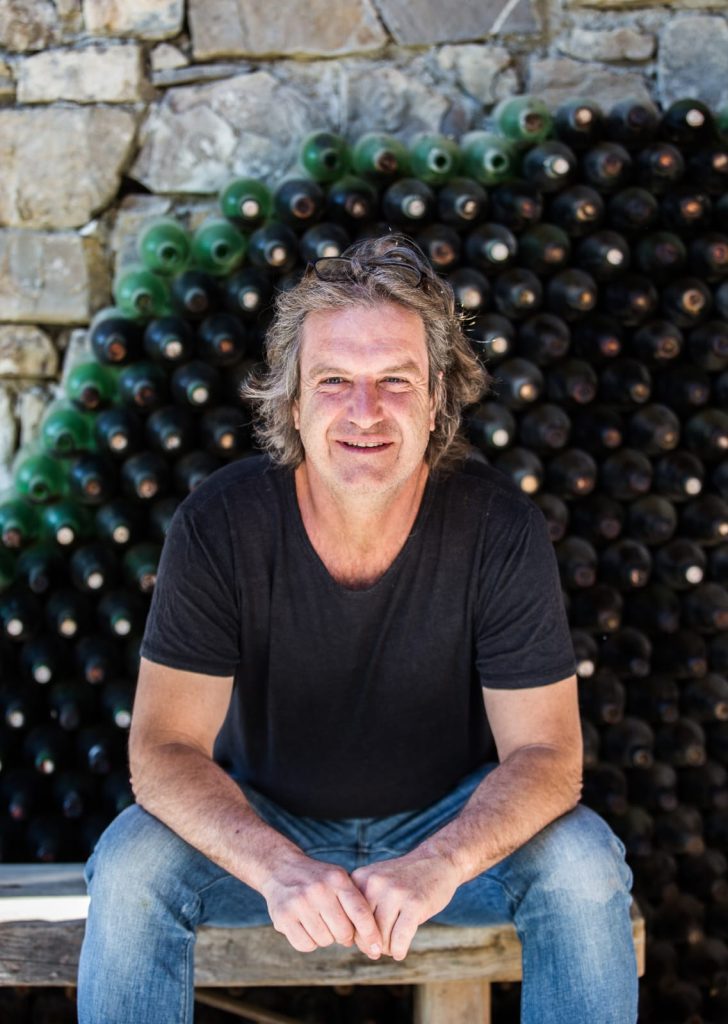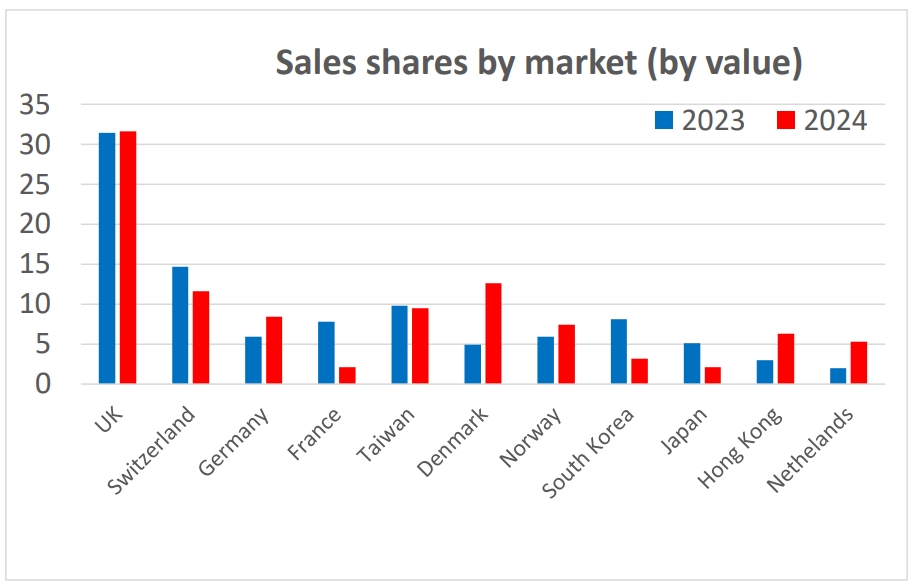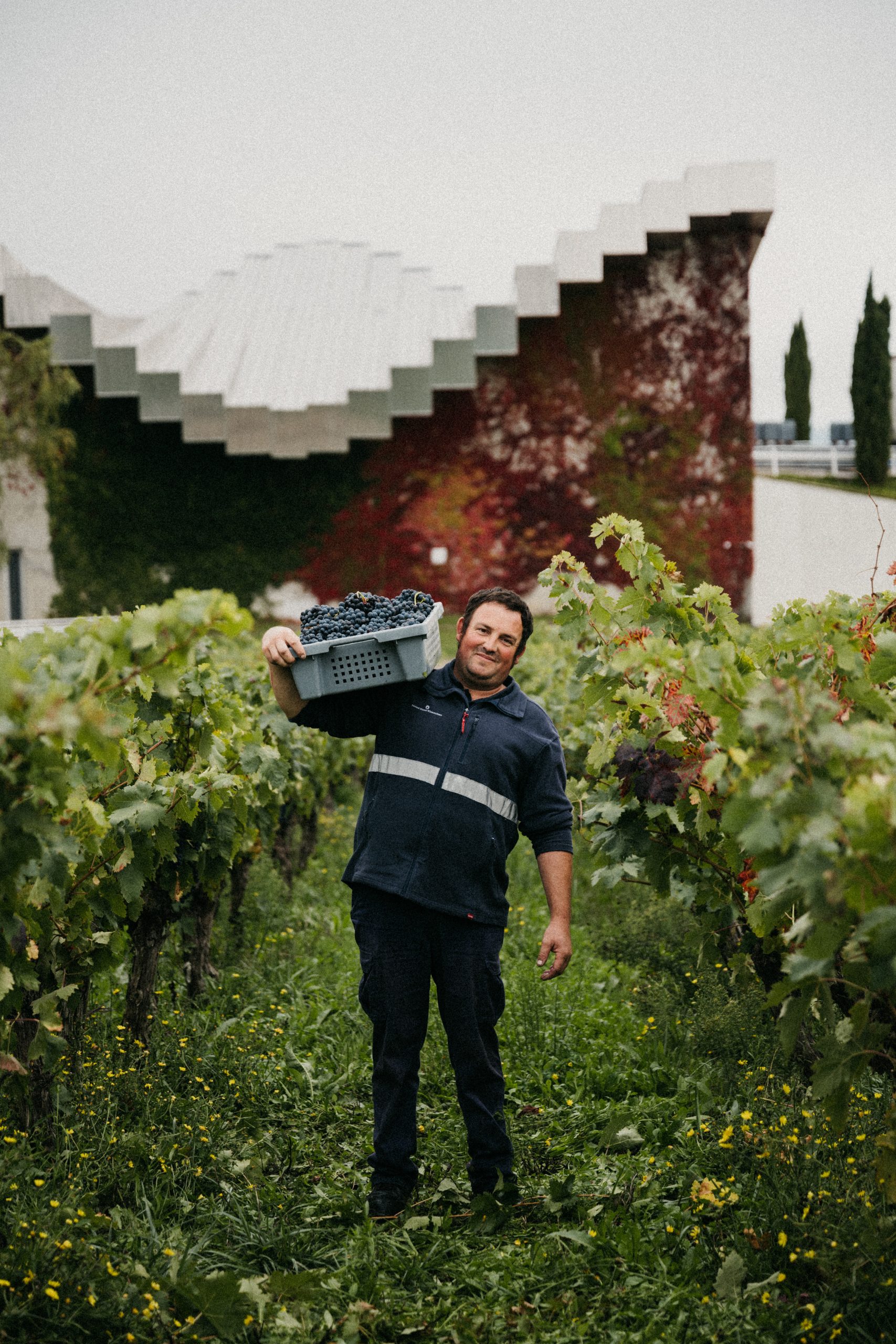Bibi Graetz’s success on La Place points out valuable lessons
It was hardly a closely guarded secret that the La Place autumn campaign was likely to prove one of attrition – and so it has proved. But the exceptions to that rule offer an insight into how La Place can be made to work by dynamic properties even in the most adverse of market conditions. Colin Hay reports.

One such exception is Bibi Graetz, who has shared some of its autumn collection sales data with db, and the strategy underpinning the figures. Taken together they paint an intriguing picture.
Graetz released his new vintages of Testamatta and Colore (the 2022 vintage for the reds, the 2023 vintage for the whites) through La Place de Bordeaux on 12 September. Within a couple of weeks of the release, 95% had already sold through and all four of these wines are now essentially unavailable to those who have not already secured an allocation.
According to Vincenzo d’Andrea, Bibi Graetz’s commercial director (and right hand man), three factors are crucial to this success: the relatively small size of the release (with a drop in production of around 55% in total volume), the high quality of the wines themselves (Colore, for instance, secured 100 points from James Suckling, 97 points from Jane Anson and 98 points in my own evaluation) and, no less significantly, consistency and competitiveness in pricing.
As Alessandro Pagani, fine wine buyer at ARVI, points out, despite it being one of the most challenging September releases of the past decade, Graetz achieved “remarkable success” due to “the exceptional quality of the product and a well-thought out strategy that took the global market situation into account”.
“I believe this year’s release truly highlights the strength and ingenuity of Bibi Graetz, both as a winemaker and as a 360-degree brand,” he said. “This is evident when considering that 2022 marks the best Colore ever produced with even greater support provided to partners worldwide [from the property].”
Jeremy Quievre, general manager at Excellence Vin, Bibi Graetz’s courtier on La Place, said that Graetz and his team had “anticipat[ed] market trends and energiz[ed] the brand on a global level” while supporting the sales teams of négociants and their customers.
“This has led to the successful release of the 2022 vintage, with wines that continue to stand out in an increasingly complex market,” he said. “Thanks to the collective efforts and flexibility of the Bordeaux négociants, each client received the quantities they desired. As a result, residual stock in Bordeaux is nearly non-existent, further strengthening the brand’s value and maintaining market trust. This is a great achievement for the seventh release on La Place de Bordeaux.”
Lessons learnt
The lesson here is responsiveness to difficult market conditions, the capacity to react quickly from the property itself and a creative and dynamic link between the property and the pool of négociants, with the courtier and the property working together to pool their commercial resources in the service of a common strategy. Such coordination may well be rare, but it is being noted and emulated.
If it is the headline sales figures that immediately catch the eye, the more fine-grained details of the sales data are certainly no less interesting.
Partner Content
The table below shows the distribution between markets of Bibi Graetz’s releases in the 2023 and 2024 autumn campaigns (by value). The sales data for the US and Italy are excluded, as these are distributed directly from the property rather than through La Place itself.

As the data show, this is a story of both continuity and change. As Vincenzo d’Andrea told db, “overall, Europe has solidified its position as the driving force behind the global wine trade in 2024, continuing to lead both in volume and in value. In contrast, Asia – particularly Japan, China and South Korea – has experienced a notable decrease in wine consumption and market share in comparison with 2023”. The effect is that it is the UK that stands out among the top players of the campaign in 2024.
This Vincenzo d’Andrea attributes to three factors: Bibi Graetz’s increasingly close partnership with leading UK fine wine merchants (notably Berry Bros. & Rudd), growing interest in Testamatta and Colore in the secondary market and increased demand for all of Bibi Graetz’s wines amongst private collectors.
His conclusion is clear: “Despite challenges in the global wine market, Europe remains the heart of the wine trade, with the UK at its forefront. In this climate, high-quality products, a solid market presence and a sharp commercial awareness have become increasingly important factors for achieving stability and earning the trust of both consumers and partners”.
The lessons of all of this are no less clear to Charlie Leech at Berry Bros. & Rudd in London.
“The success of this year’s release can be largely attributed to two things, the outstanding quality of the vintage and the whistle-clean professionalism of the Bibi Graetz team,” Leech pointed out. “2022 is like Ultra Colore. However, just making great wine isn’t good enough. Actions such as sacrificing nearly two-thirds of the volume whilst not increasing price, ensuring the smooth running of a synchronized global tasting for every partner of the brand, proactively balancing the demand and the hype around the wines to continue to propel them forward in a sustainable way, alongside fundamentally brilliant wines is where we find the key to Bibi’s success.”
“We couldn’t have asked for more from this year’s release.”
Related news
Castel Group leadership coup escalates
For the twelfth day of Christmas...
Zuccardi Valle de Uco: textured, unique and revolutionary wines




